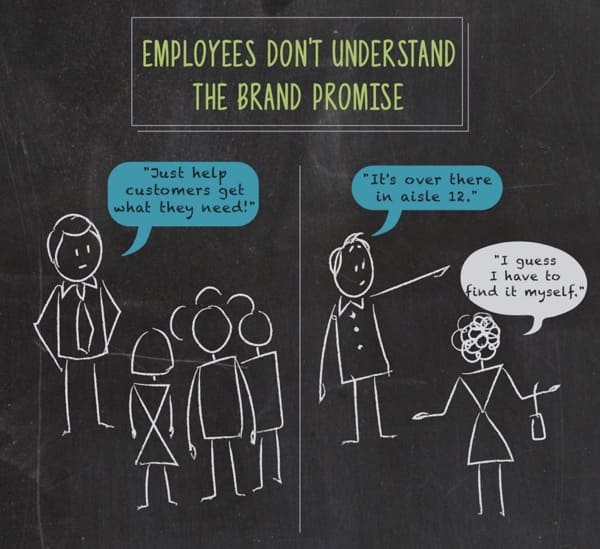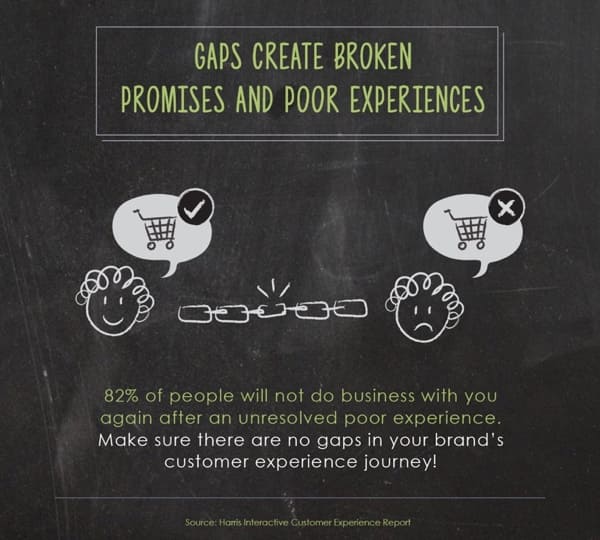In today's fast paced digital world, discovering and implementing the latest SEO tactic or social media trend sometimes seems all-consuming. If there's time leftover, there are still blogs to write and ad campaigns to run.
For marketers and marketing teams, the list of things to do is truly endless.
In my experience with current marketing strategies, there’s a tendency to worry too much about day-to-day minutia. Marketing is about making your products and services attractive and helpful to customers, and if your products and services do have built-in value, this is easy!
I believe today’s strategies are undervaluing a marketing tenet that can calm the collective storm in the minds of marketers: a great customer experience!
It’s not that marketers don’t want to deliver a great customer experience, but rather they sometimes don’t understand their roles within the customer experience itself.
The truth is, delivering a truly exceptional customer experience begins in the marketing department. Still not sure why? Read on to find out the 3 ways to align your customer experience with your your marketing message!
As Employees, Live Your Brand
The roots of a great customer experience actually start with your company and its leaders. Marketers often look internally for inspiration for their customer-facing messages, which means the way they are trained and treated as employees will be reflected by the marketing material they produce. As a leader, this is exactly what I want, and it’s my job to ensure we treat our employees the way we want them to treat our customers!
Too often, however, companies fail to teach their employees how to properly “live their brand.” A Toronto customer experience agency called Fifth P created a very helpful infographic outlining the customer experience breakdown, which often begins with employees who aren’t trained well enough, as seen here:
Leaders: when employees – like marketers – are trained and treated in ways that directly reflect the message you want to project to potential customers, you have laid the groundwork for your people to deliver great customer experience. Just beware that if you do not do this, the opposite is true: this is where poor customer experiences truly originate.
Make Promises The Team Can Keep
Everybody, at least once, has bought something they didn’t need because of a good marketing campaign. My friend recently returned from Universal Studios in Orlando with way more Harry Potter themed souvenirs than is reasonable. Who can resist the gift shops at the end of those awesome rides? It’s just good marketing!
There is, however, a significant difference between good marketing and making false claims just to get sales. Unfortunately, fierce competition sometimes calls for desperate measures, and this often includes saying anything and everything to get the sale.
Marketers and salespeople: do not make promises the products and service can’t keep.
If a company makes a car with a max speed of 195mph, they should not say it can reach speeds over 200mph. A golf club company should not say its driver can lower a golfer’s score by 10 shots...because nothing can lower Charles Barkley’s score by 10 shots. Marketing companies shouldn’t promise to get brands a #1 ranking on Google because there is simply no way to guarantee it.
The people over at Fifth P found a stat saying 82% of people will not do business with you after an unresolved poor experience. Any sales made under false pretenses just amounts to fool’s gold. Be honest about your products and services and highlight their value, nothing more, nothing less.
Make promises you can keep. Don’t do this:
Deliver On Your Marketing Messages
“You are what you do, not what you say you'll do.” – Carl Jung
This quote is an apt maxim for both company leadership and marketers. If a company claims it will treat employees a certain way, and then follows through, those employees are much more likely to deliver the same experience to customers.
Let’s use a recent experience I had with Amazon Prime as an example. Amazon Prime in Canada costs $79 and offers free two-day shipping on millions of items, with the option of one-day shipping for an additional $3.99.
On a Wednesday evening around 6pm, I ordered an item that was eligible for two-day shipping and also selected the one-day option for $3.99. On Friday morning, I got an email saying my item was shipped and I could expect it by 8pm that evening.
The reason I got Prime, however, was that I needed the item by 12pm on Friday. If I got the item at 8pm on Friday, that’d be more than 48 hours after I ordered the item and asked for one-day shipping. Not exactly getting what I paid for!
Immediately after I received this email – about 9am on Friday morning – I contacted Amazon support. To make a long story short, my item arrived less than three hours later, and was dropped off by a courier driving a car. Not a courier truck, just a little sedan. I’m not exactly sure what happened, Amazon just said I would have my purchase by noon – and I did.
Conclusion
Even though it seemed like Amazon might not deliver on their promise to me, in the end, they did everything possible on their end and eventually came through. This is how it should be, and it likely means that if Amazon the company makes a promise to their employees, they too will do everything possible to keep it.
If your company makes a promise with its marketing message, you need to do everything within your power to keep that promise, even if a million things go wrong. Overtime, long hours, even taking a financial hit – it's all worth it to keep that promise.
Because to the customer, you are what you do, not what you say you’ll do.








